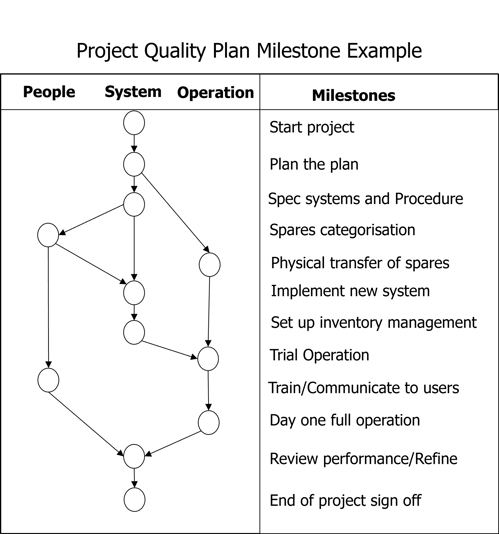Why you need a Project Quality Plan
Quality plans provide a top level project road map of linked milestones plus exit/success criteria to clarify the scope of the project, firm up on project risks and accountabilities for each milestone step. They also provide a vehicle to avoid common project pitfalls.
3 min read


One of the biggest obstacles to successful project delivery is the tendency for day-to-day priorities to overshadow the longer-term planning horizons essential for project success.
When immediate problems dominate attention, the release of resources needed on projects are often delayed or withheld until late in the project, making it difficult to address latent project issues at an early stage when they are easier and less costly to resolve.
This reactive environment also strains frontline teams, limiting their capacity to adopt new practices and stifling the continuous improvement that could otherwise drive project success.
An effective countermeasure to this is involving project stakeholders in creation of project quality plans during the project concept or high level design phases. Through this project managers are able to:
Proactively identify and address latent project risks early in the programme when they are cheaper to resolve,
Coordinate functional readiness plans across the project programme steps,
Aid the release of skilled resources to assist with the delivery of flawless operation from day 1,
Foster an environment of continuous improvement to release additional project value.
Quality plans provide a top level project road map of linked milestones plus exit/success criteria to clarify the scope of the project and accountabilities for each milestone step. The 10 to 20 or so milestones provide a framework to which detail can be added as more insights are gained during the project process. As such they provide a useful basis for tracking progress to support effective project governance.
Beyond the technical aspects, this experience of milestone planning provides project stakeholders with the opportunity to learn how to create roadmaps that balance resource allocations between day to day operational needs and actions to deliver longer term strategic goals. An important foundation for lasting business success.
When executed well, projects present an ideal opportunity to refine management processes and strengthen leadership capabilities. High-performing projects not only deliver greater returns on investment but also foster a more engaged workforce and promote higher-value outcomes for stakeholders.
By crafting and adhering to well-defined quality milestones, leaders can develop improvement road maps that extend well beyond day-to-day performance management. These road maps provide a structured approach for embedding new practices, fostering a culture of proactive problem-solving, and ensuring that project-driven improvements evolve into long-term performance gains. Ultimately, milestone quality plans help organisations strike the right balance between immediate operational needs and the strategic initiatives that propel sustainable growth.
Creating a Project Quality Plan
The Project Quality Plan focuses on milestones, and leaves activity planning to when we have the best knowledge of what is needed. This increases the quality of activity planning considerably.
Each milestone includes exit criteria setting out what the project should achieve and by a given date. That way Milestones become control points to confirm that the project is moving in the right direction which provides a useful vehicle for project governance.
Below is an illustration of a (simplified) milestone plan for a maintenance stores project.


As the project quality plan example shows this sets out the logical dependencies between milestones.
Typically there are at least three paths. Every path has a name, which tells us what kind of development the project is working on. Any milestone activity can begin at any time but a milestone cannot be completed before all previous milestones have been signed off.
Project Quality Milestone plans are an effective means of communication between project managers and project stakeholders. It presents a relatively comprehensible picture of what the project is aiming for, and the connections between milestones and the project. Through this shortcomings and logical flaws are quickly discovered and corrected by stakeholders whenever necessary.
That makes it easy for project stakeholders to track project progress and update their own plans to deliver their part of the project.
Contact us to find out more about how we can help you to enhance your project management process using best practices such as project quality plans
DAK Consulting
Chiltern House
45 Station Road
Henley on Thames
RG9 1AT, UK
Info@dakconsulting.co.uk
www.dakacademy.com
+44 (0)1491 845504
